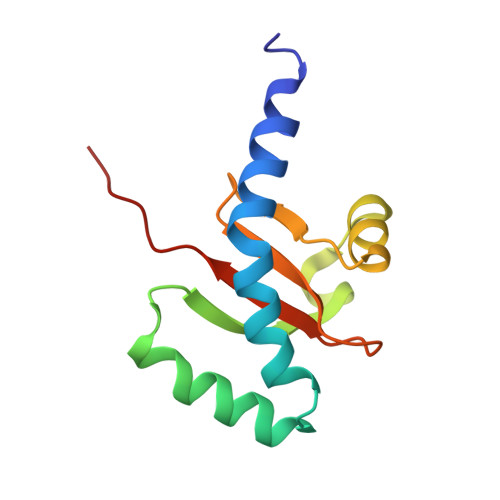Host-derived peptide signals regulate Pseudomonas aeruginosa virulence stress via the ParRS and CprRS two-component systems.
Zhao, N.L., Zhu, Z.Q., Feng, H.Z., Song, Y.J., Huang, Q., Mou, X.Y., Nong, C., He, Y.X., Bao, R.(2023) J Hazard Mater 460: 132512-132512
- PubMed: 37703740
- DOI: https://doi.org/10.1016/j.jhazmat.2023.132512
- Primary Citation of Related Structures:
8JU7 - PubMed Abstract:
Pseudomonas aeruginosa, a versatile bacterium, has dual significance because of its beneficial roles in environmental soil processes and its detrimental effects as a nosocomial pathogen that causes clinical infections. Understanding adaptability to environmental stress is essential. This investigation delves into the complex interplay of two-component system (TCS), specifically ParRS and CprRS, as P. aeruginosa interprets host signals and navigates stress challenges. In this study, through phenotypic and proteomic analyses, the nuanced contributions of ParRS and CprRS to the pathogenesis and resilience mechanisms were elucidated. Furthermore, the indispensable roles of the ParS and CprS extracellular sensor domains in orchestrating signal perception remain unknown. Structural revelations imply a remarkable convergence of TCS sensors in interacting with host peptides, suggesting evolutionary strategies for bacterial adaptation. This pioneering work not only established links between cationic antimicrobial peptide (CAMP) resistance-associated TCSs and virulence modulation in nosocomial bacteria, but also transcended conventional boundaries. These implications extend beyond clinical resistance, permeating into the realm of soil revitalization and environmental guardianship. As it unveils P. aeruginosa intricacies, this study assumes a mantle of guiding strategies to mitigate clinical hazards, harness environmental advantages, and propel sustainable solutions forward.
Organizational Affiliation:
Center of Infectious Diseases, Division of Infectious Diseases in State Key Laboratory of Biotherapy, West China Hospital, Sichuan University, Chengdu 610041, China.














